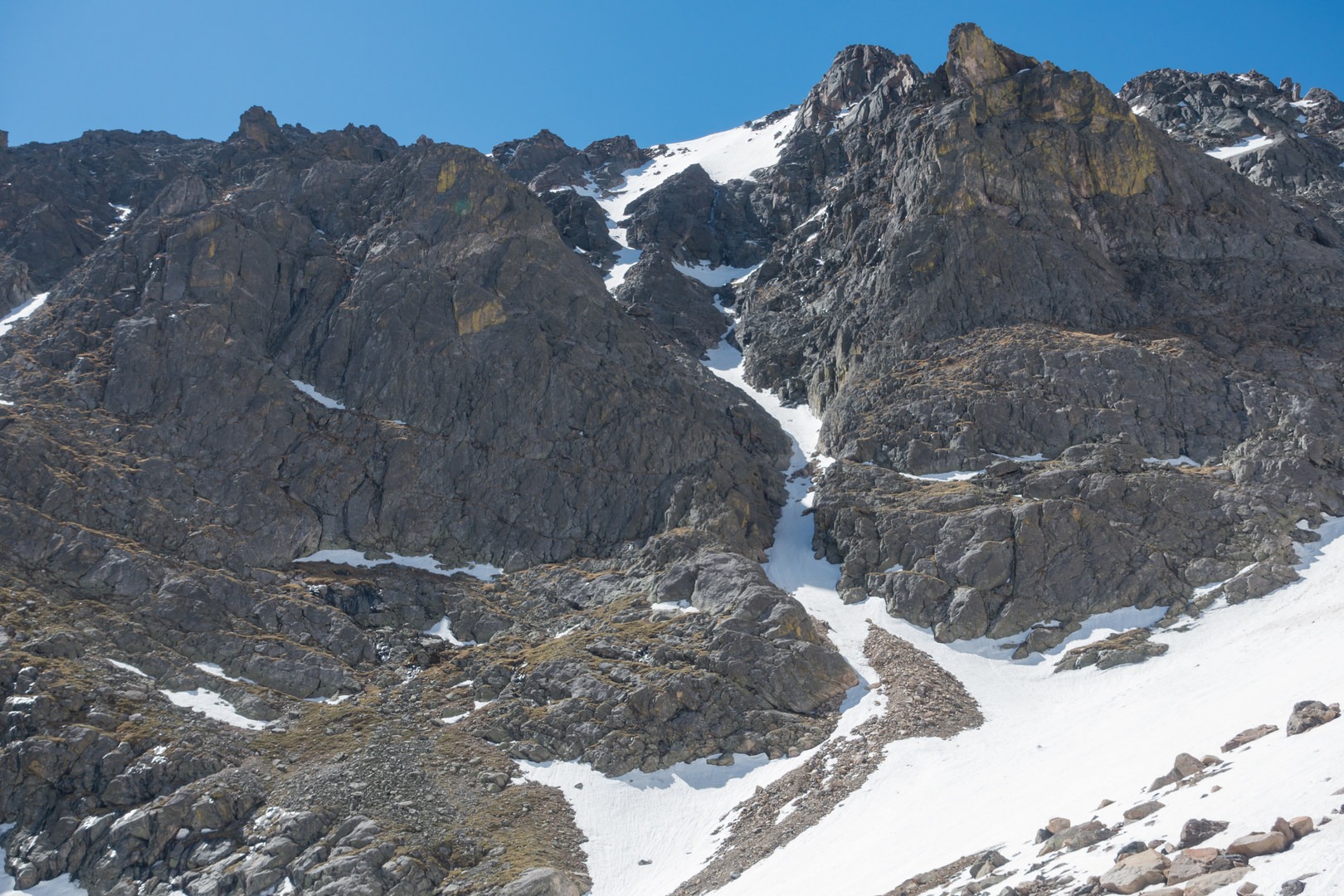You are here
Flattop Gully, one of the north couloirs of Flattop Mountain and sometimes grouped in as one of the Ptarmigan Fingers, is an excellent beginner mountaineering route for people still getting comfortable in steep snow. The route is easily accessible from Bear Lake Trailhead, open all year, and offers a chance to climb steep snow without needing any ice or rock protection for most of the season. The special charm of this route is due to the nature of the couloir itself: It winds up the north face of Flattop Mountain and has steep rock walls on both sides the whole time, giving it a maze-like quality. This maze-like quality can also become a hindrance if you miss a turn, and the route can become rockier or steeper than it should be while side-climbing back to the normal route.
The hike begins at Bear Lake Trailhead, which is paved and wonderfully maintained all year, but the main season for this route tends to be mid-spring through mid-summer depending on how fast the snow is consolidating early and melting later in the season. Hike toward Odessa Lake north from Bear Lake and enjoy the views of approaching Notchtop Mountain. After reaching Helene Lake, turn left and begin working your way up the slope between Notchtop and Flattop, toward Ptarmigan Glacier in the distance.
From Lake Helene, the off-trail climb of around 400 vertical feet takes you to a small emerald tarn at the bottom of what should still be a large snowfield. To the left you should see an obvious gash in the north face of Flattop Mountain with a gully weaving between large rock walls. This is the couloir you’re looking for. The entrance to the couloir is below or about level with the shoulder above the tarn, so don’t climb too high. Keep a wide berth around the right of the tarn as you approach the couloir so you can study the path and plan your route to avoid cornices that may have formed at the summit rim.
Upon entering the couloir, navigation becomes very difficult as the winding pathway obstructs your view ahead. This maze-like quality, while making the route a navigation challenge, adds to the solitude and fun of the technical section of the climb. Keep left at the first major intersection to avoid technical rock, and then bear climbers’ right at the next junction. It can be difficult to spot when to bear right, so if you end up going too high you can either downclimb to rejoin the route or side-climb across steeper slopes to rejoin the path. Know your limits and choose the safer option for you and your team.
The route keeps to a slope of between 45 and 50 degrees, with a short section topping out closer to 60 degrees near the top. At the summit you are sure to be joined by a dozen or so hikers who took the standard Flattop Trail, which will be your likely descent route. Flattop Mountain is crowned by a wide open tundra plateau with options in every direction. The easiest and best “bang for your buck” extra credit will be tagging Hallett Peak, the closest prominent summit, for an additional 700 feet of gain to score superb 360-degree views of the center of Rocky Mountain National Park.
Once you feel like going down, return to the junction at Flattop Mountain and take the standard trail back to Bear Lake Trailhead. Periodically check to the right, as the view of Hallett Peak slowly turns into the view of the prominent cliff-faces typical of the view from Dream or Emerald lakes below. Below treeline the trail can be tricky to follow as late season snow drifts become very slushy and easily obscure the trail. This is one of the few loops you can do where you can get back to your car confident that you’ll be able to count on one hand the number of groups having completed the same climb as you that day.
Logistics + Planning
Current Weather: Powered by Dark Sky
























Comments
Sign In and share them.